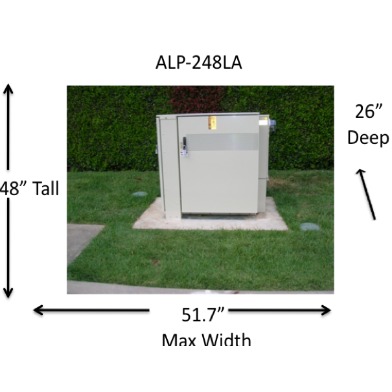 AT&T really, really wants a piece of the San Francisco Internet and cable television market. And San Francisco wants AT&T — the Board of Supervisors in July approved a plan for the telecom giant to install up to 726 utility cabinets on public right of way, the infrastructure necessary to offer to all SF neighborhoods a corporate competitor to Comcast.
AT&T really, really wants a piece of the San Francisco Internet and cable television market. And San Francisco wants AT&T — the Board of Supervisors in July approved a plan for the telecom giant to install up to 726 utility cabinets on public right of way, the infrastructure necessary to offer to all SF neighborhoods a corporate competitor to Comcast.
But just how badly AT&T — and the San Francisco City Attorney, whose bills the taxpayer foots — want a piece of the SFC will be put to a test in a courtroom, after a group of open space advocates convinced a judge to halt AT&T’s construction until a trial begins sometime next year.
San Francisco Beautiful has for years thwarted AT&T’s scheme to build the utility boxes on public right of way, a plan the company has pursued since 2006. San Francisco Beautiful’s opposition first led AT&T to build the U-Verse utility boxes elsewhere in the country and in California before returning to San Francisco to try again. Then, the group’s opposition convinced AT&T to significantly scale down the utility boxes in size, from huge man-sized cabinets to the current four-feet-tall, four-feet-wide and two-feet-deep model.
San Francisco Beautiful argued that the utility boxes should be built on private property and not the public right of way. Plenty other utility cabinets exist on public right of way, AT&T argued, and to force the company to rent or purchase private property to build its infrastructure would have been an unfair extra burden.
This summer, San Francisco Beautiful tried — but failed — to convince the Board of Supervisors to force AT&T to conduct a full environmental impact review before building the utility cabinets; the EIR process is both lengthy and costly and has felled many a development project in California. The Board voted 6-5 to approve AT&T’s plans to go ahead with the construction sans EIR.
In August, the group, joined by San Francisco Tomorrow, the Dogpatch Neighborhood Association, the Potrero Boosters Neighborhood Association and the Duboce Triangle Neighborhood Association sued — and last week, San Francisco Superior Court Judge Harold Kahn sided with San Francisco Beautiful.
“There is a fair argument that the cumulative effect of the AT&T utility boxes, considered alone or in conjunction with the many pieces of “street furniture” in San Francisco is significant,” Kahn wrote in his one-page ruling (you can see it here), adding that “there is a reasonable possibility that the AT&T utility boxes will have a significant impact on the environment.”
AT&T had pulled permits for about 100 utility cabinets prior to the judge’s order. One — at La Playa near Fulton Street in the Outer Richmond — had been completed, and construction was scheduled to begin soon on another dozen.
In a statement, Marc Blakeman, an AT&T regional vice president, said that the company “believes it ultimately will prevail in the litigation.”
“Residents across the City, as well as the San Francisco Board of Supervisors, have voiced support for competition and choice when it comes to TV, high speed internet and digital phone service,” Blakeman said in an email.
Named also as a defendants is the City and County of San Francisco. So, dear readers, if your own Internet and television didn’t cost enough, take heart: your tax dollars are already at work for AT&T’s behalf.
Want more news, sent to your inbox every day? Then how about subscribing to our email newsletter? Here’s why we think you should. Come on, give it a try.









